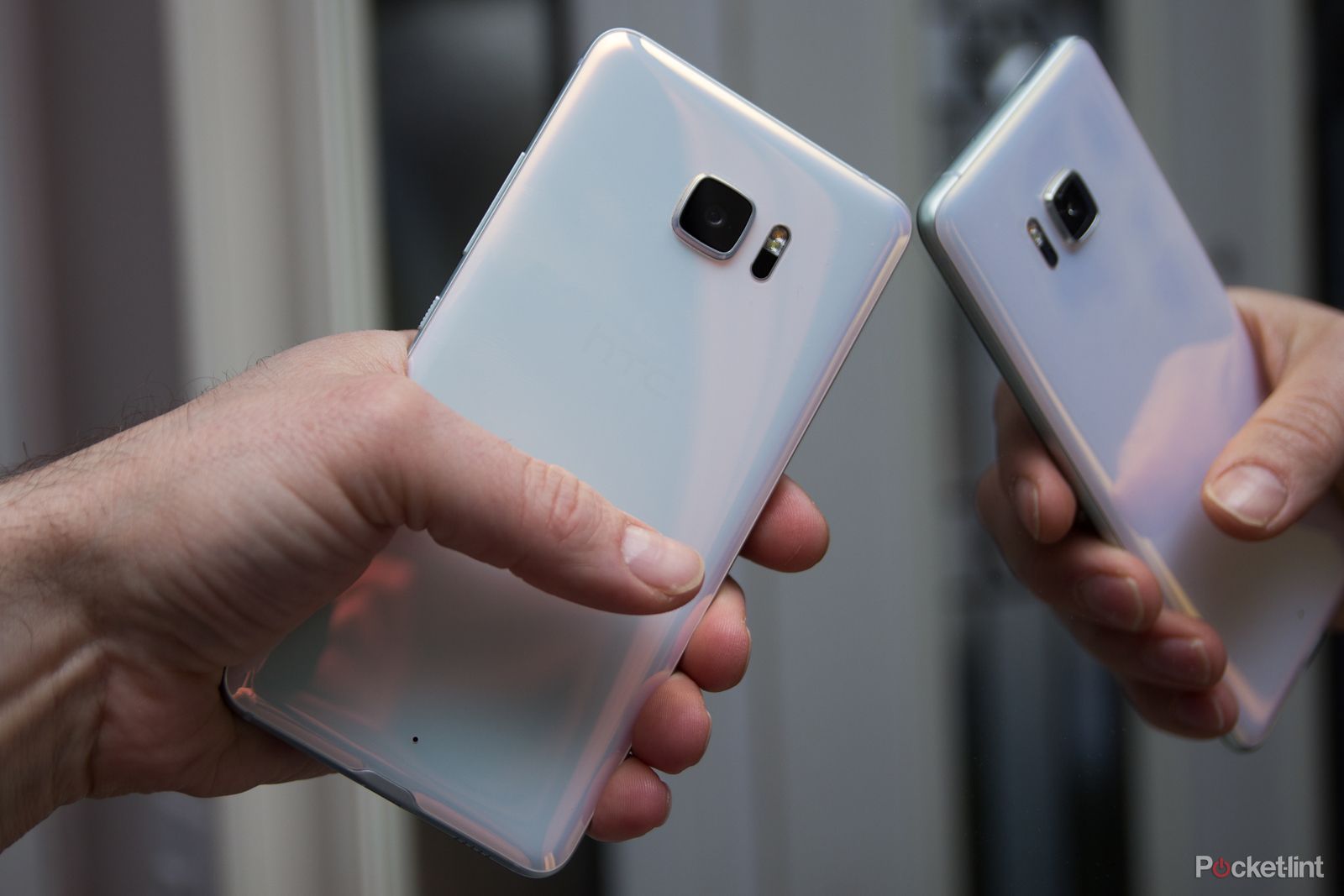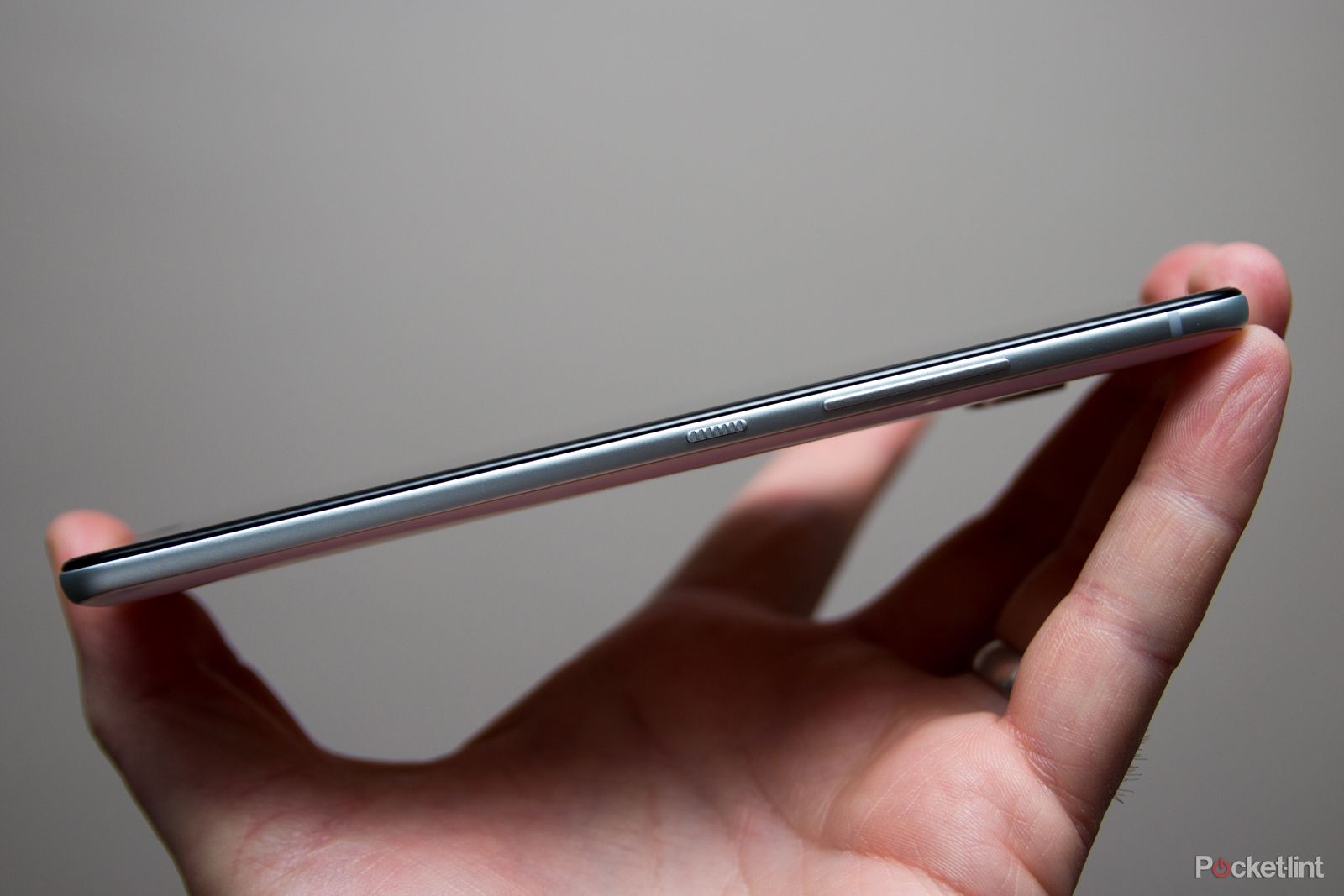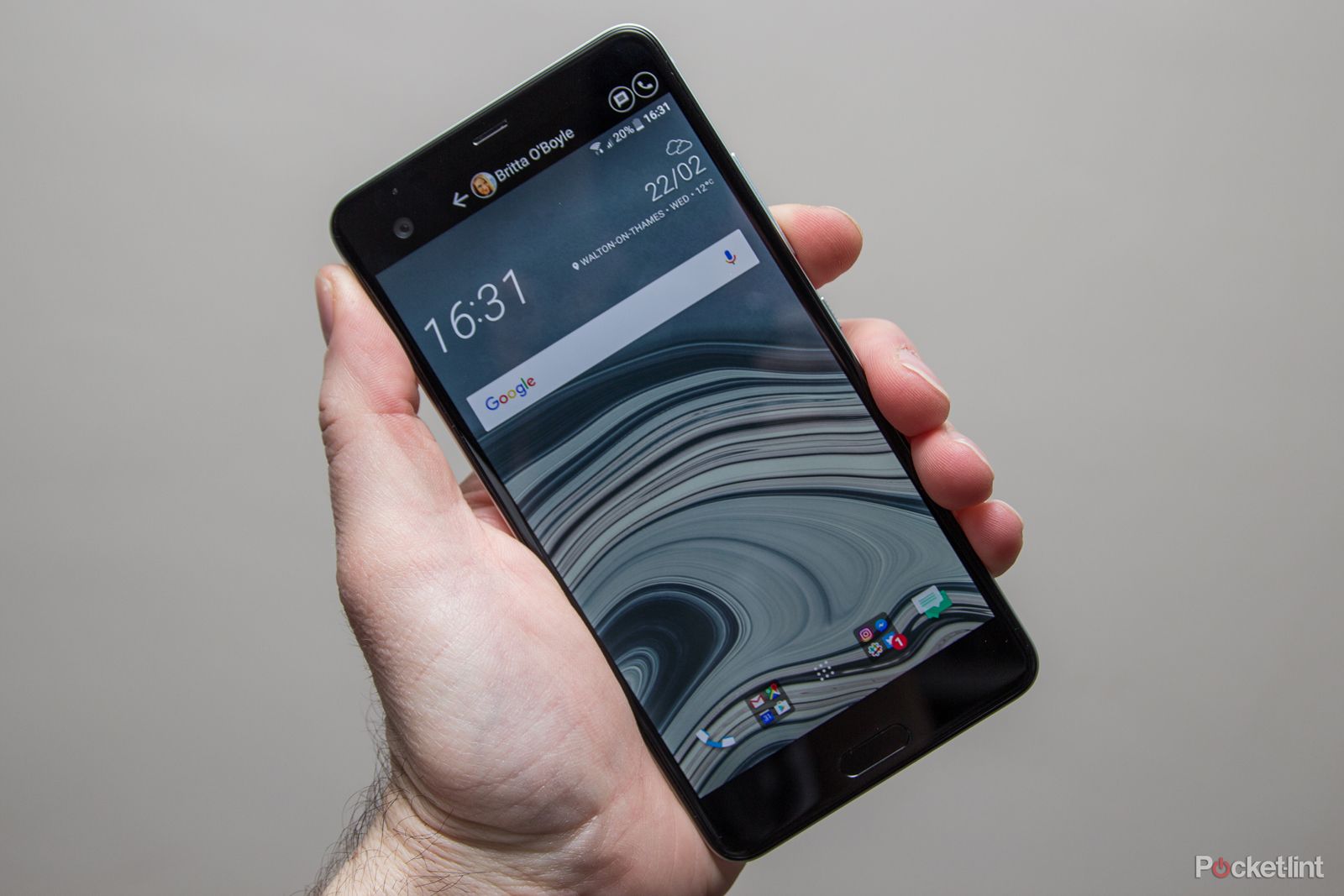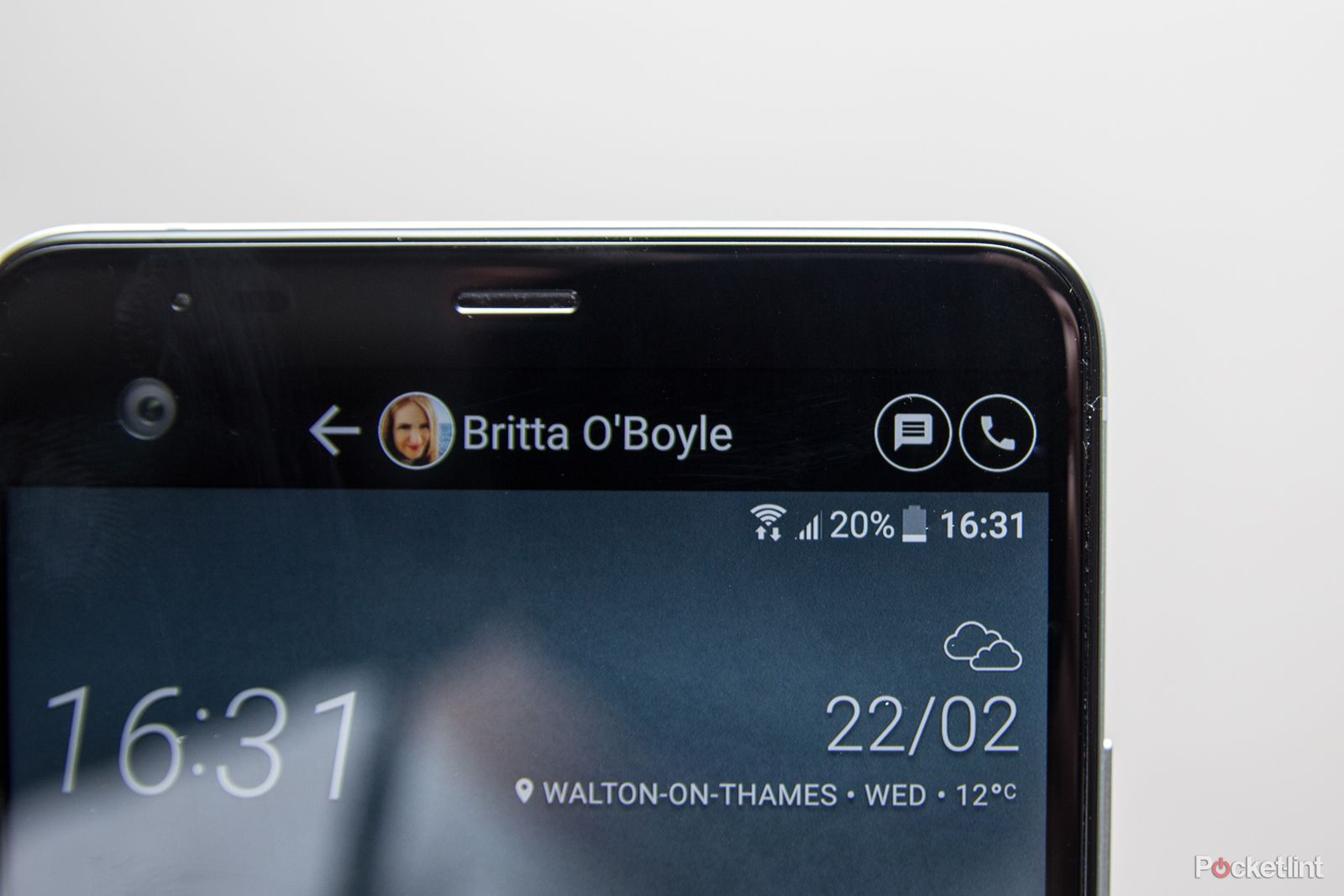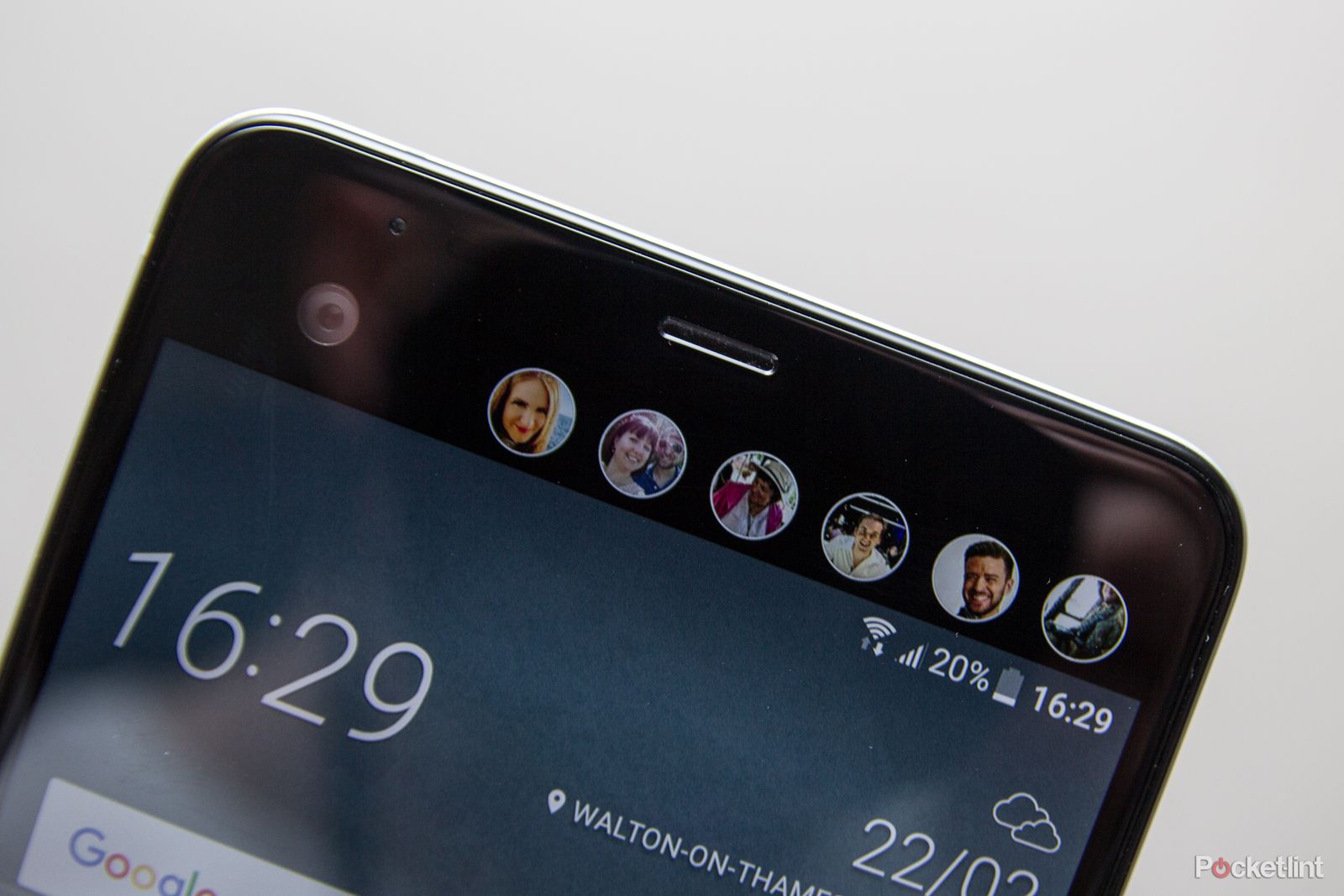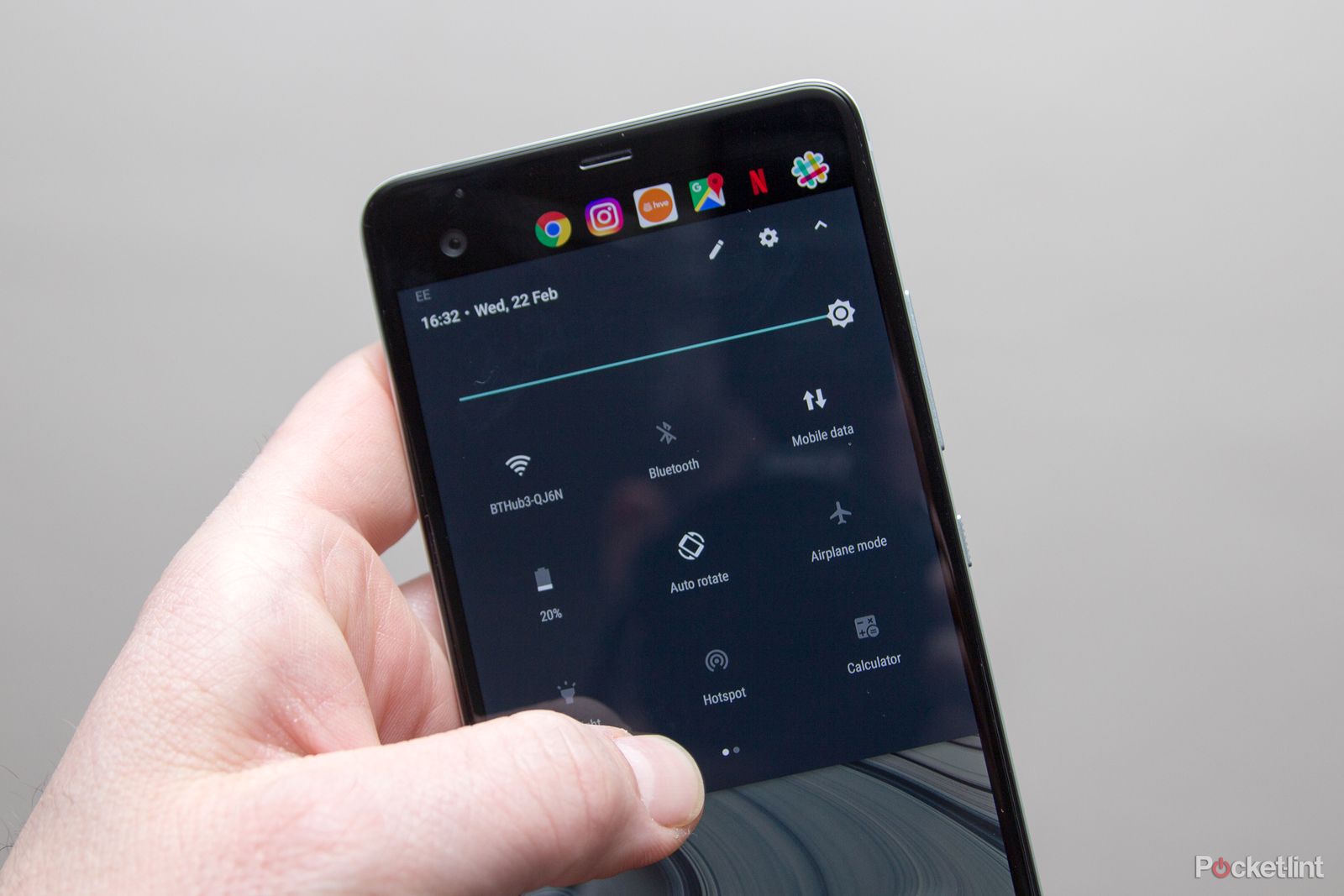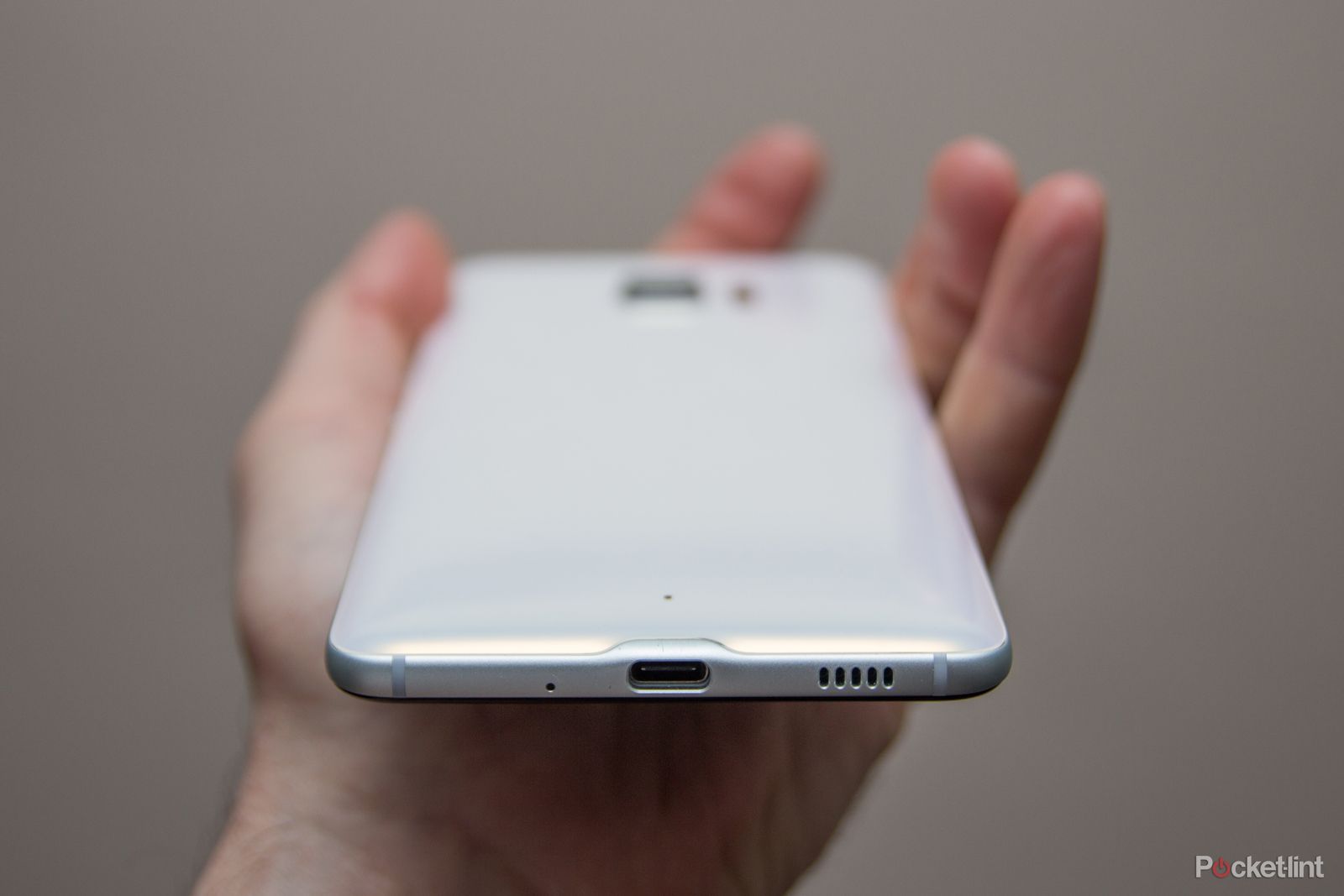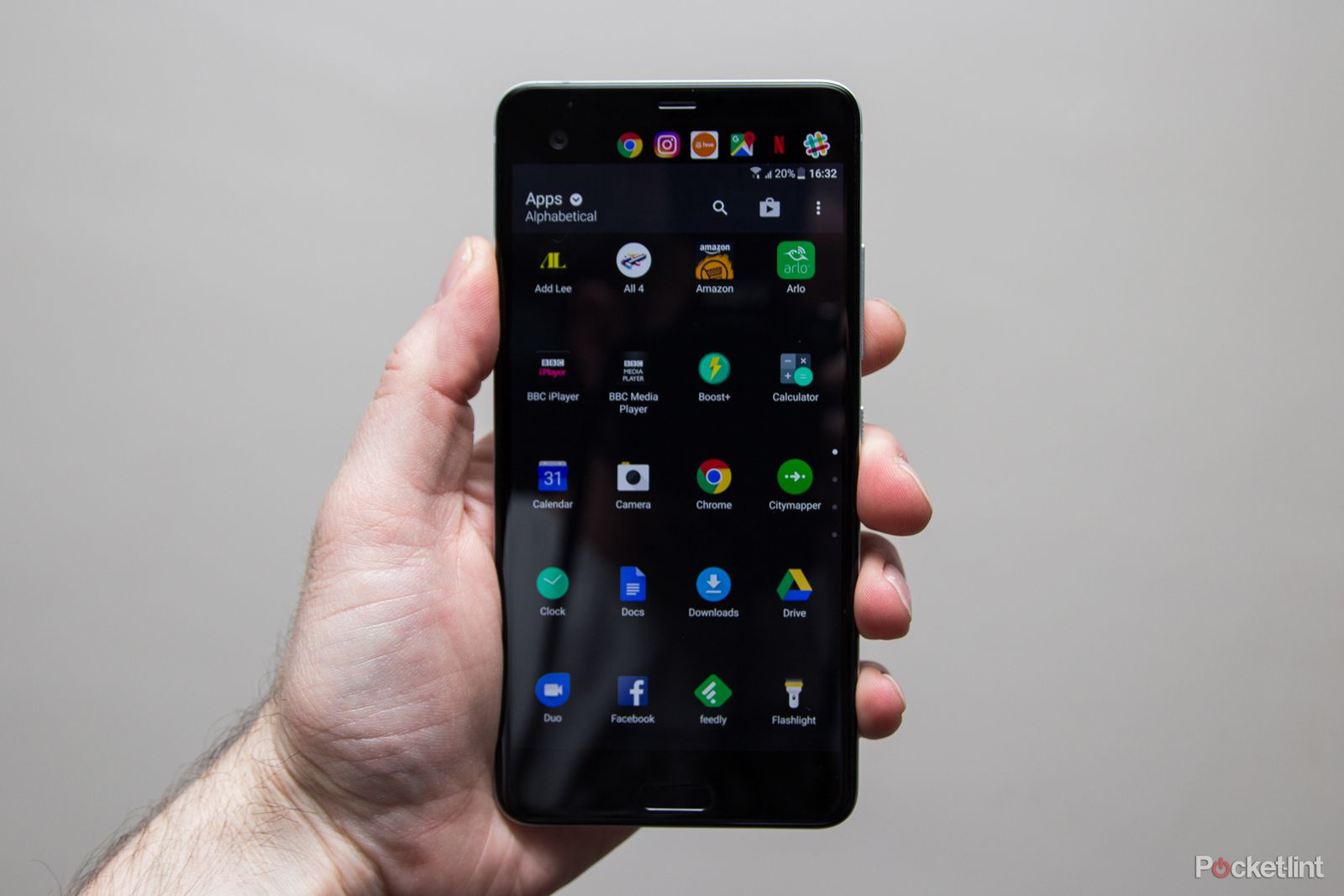HTC has kicked off 2017 with a new family of devices called HTC U. The logic is simple enough to follow: they are designed to be all about "you" (see what they did there?) and advance the connection between you and your device, for a more symbiotic relationship.
Our quick take
The HTC U Ultra sets out its stall in a strange position. It's a big screen phone from HTC that part embodies some of the company's previous traits (it's a Sense experience that's well-built), while introducing a new, unique finish. It's certainly striking to look at.
There's a lot we like about this hardware, although arguably it's not as exciting as the Samsung Galaxy S7 edge, or the Mate 9 Pro - although it's a larger size than both those devices. As such, it joins the big league, as an obvious choice for those who want to push larger than the increasingly staple 5.5-inch scale.
The real downside is that the HTC U Ultra doesn't have the battery life to compete with many 5.5-inch devices and neither does it carry with it is huge battery advantage of something like the Mate 9. This might improve with the Sense Companion which claims to better know and manage your device, but we can't help feeling that the battery should just be more capacious.
Where the audio takes away with one hand - there's no 3.5mm headphones socket - it gives back with the other with Hi-Res quality and some of the best bundled in-ear headphones you'll find with a phone.
Finally the camera makes a good showing for itself. It's a camera we've enjoyed using, giving us the feeling that HTC has listened, learned and made some necessary improvements.
But then there's the £649 asking price. This puts the U Ultra as much more expensive than the likes of the OnePlus 3T, more expensive than the Mate 9 and almost as expensive as the Note 7 at launch. It therefore feels a little over-priced, and with a new range of smartphones incoming - LG G6, Huawei P10 Plus, Samsung Galaxy S8, all of which might be cheaper - the U Ultra potentially faces an uphill struggle.
That may change with the integration of Sense Companion and while we're not holding our breath, we'll keep an open mind and update this review once this key update has landed.
Alternatives to consider...
Huawei Mate 9
The Huawei Mate 9 is the big screen phone to beat. It offers a huge 5.9-inch display that, although only offernig a full HD resolution, gives huge amounts of space for all your entertainment. The Mate 9 is solidly built and solidly specced, with ample power on offer, with great all-day long battery life and an excellent camera.
Huawei also offers greater value for money than many of the more familiar brands, so you're getting a lot of phone for your £549. The EMUI software drags Android Nougat into many new directions, packing in a load of features and options you might choose to exploit or ignore, but the overall experience is fantastic.
Read the full review: Huawei Mate 9 review
OnePlus 3T
The OnePlus 3T might be called the mid-range wonder, but packing in the same Qualcomm Snapdragon 821 chipset, this is a formidable phone at all levels. Not only does it offer a fantastic design and build quality, but that great performance too. The display is a little smaller than the HTC U Ultra at 5.5-inches and it only has a full HD resolution, but then this is a phone that's also £200 cheaper, at £399.
The Oxygen OS user interface takes Android and adds a few neat tricks and it also offers blisteringly fast charging, as well as a camera that performs. The OnePlus 3T is definitely sitting in flagship territory - about the only downside is the lack of microSD card support.
Read the full review: OnePlus 3T review
Google Pixel XL
The Google Pixel XL is the Android fan's favourite, the bigger of the two Google phones, it offers the latest that Google has to offer. With the 5.5-inch Quad HD display, there's a Snapdragon 821 chipset powering this phone and 32GB of storage, but no microSD card support. The Pixel XL also hangs onto the 3.5mm headphone socket, meaning it's happy to ply with your old headphones.
The camera has been widely lauded, and there's unlimited storage in Google Drive for your photos taken with the Pixel. Great battery life, a pure Android experience with access to the latest updates and features, the Pixel XL is a great handset, only really let down by the fact that it will cost you £719, which is a lot of cash for a phone with fairly limited storage.
Read the full review: Google Pixel XL review
Samsung Galaxy S7 edge
The Samsung Galaxy S7 edge has been the highlight of Samsung's 2016 phones. Bringing power, quality and originality to design and a fantastic display, following the demise of the Galaxy Note 7, this 5.5-inch phone has become the defacto phone of choice.
It's now running Android Nougat with Samsung's heavy reworking in TouchWiz sitting over the top making this an unmistakably Samsung experience, but there's refinement and touches of excellence dotted across this phone. It's a little old, and the forthcoming Galaxy S8 might make it redundant, but that's also reflected in the dropping £589 price.
Read the full review: Samsung Galaxy S7 edge review
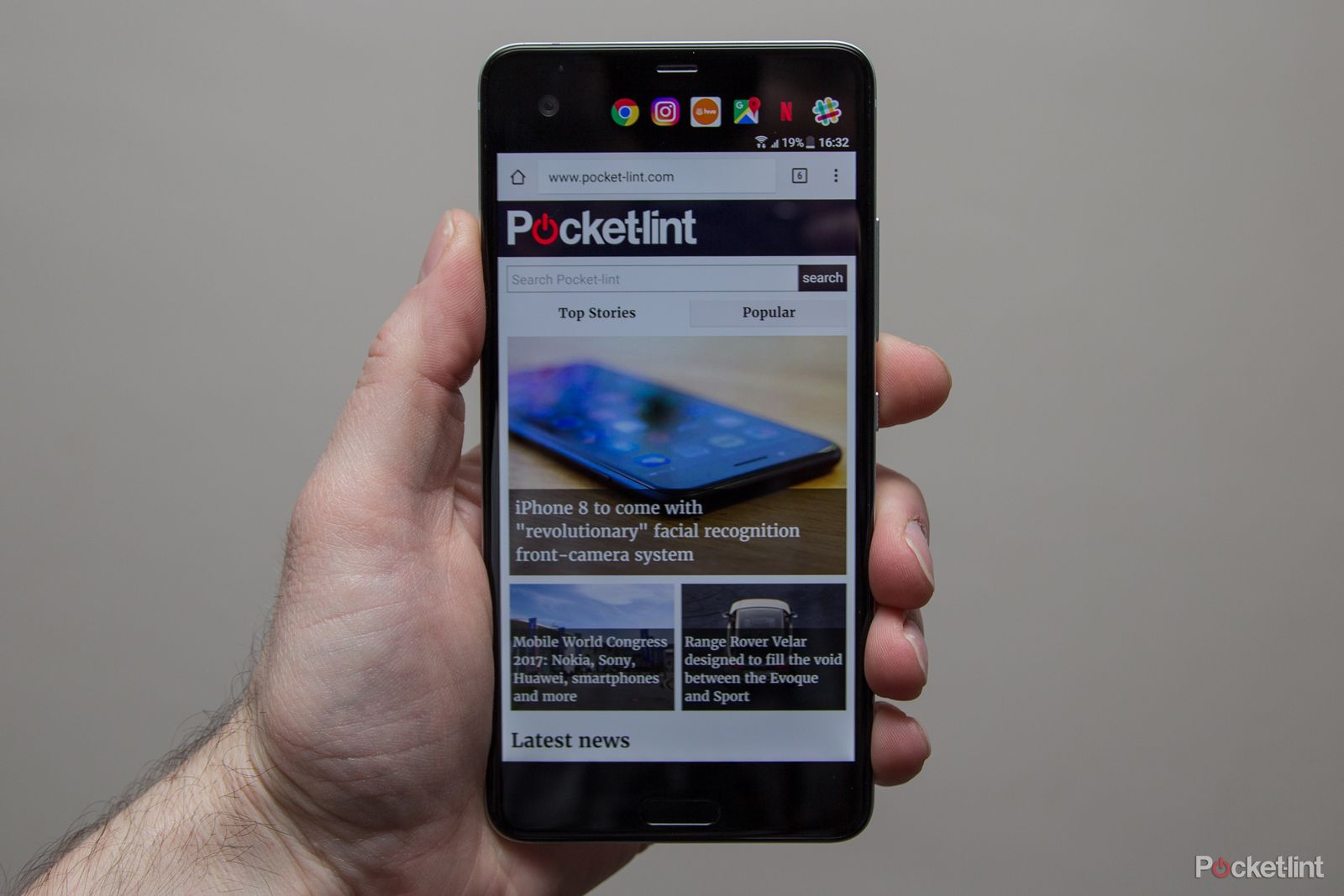
HTC U Ultra - 4.0 / 5
| FOR | AGAINST |
|---|---|
|
|
It's marketing, sure, dressing up the latest developments in HTC's smartphones, but forging into a new, large device space at the same time with the U Ultra. This isn't a size of device we've seen from HTC for a while - and with phones getting generally larger, it's a welcomed addition for those looking for more screen space.
Importantly, the HTC U Ultra isn't HTC's 2017 flagship - that's still to come - but this is a premium and powerful device nonetheless. However, is the U a truly exciting new chapter in the HTC smartphone book, or is it just more of the same?
- Best smartphones 2018: The best phones available to buy today
- Upcoming phones: The future smartphones of 2018
HTC U Ultra review: Design
- Glass front & back with glossy colour finishes
- No 3.5mm headphone socket
- 162.4 x 79.8 x 8.0mm, 170g
The HTC U Ultra is probably the biggest departure for HTC design we've seen in recent years. Stepping away from metal, it attacks the 2017 alt-flagship space with something a little more unique. HTC is calling the effect "liquid surface".
Rather than the hard metal precision of the HTC One family, the U Ultra looks as though it has a liquid finish. The back appears to flow into the edges, for a smooth rounded result. It's an impressive look and everyone we've shown it to has been interested. In a world where anodised grey is the norm, the HTC U Ultra is something of a lift (only the Honor 8 comes a close second to this style).
With four colours on offer - white, black, blue and pink - there's depth to the colour effect, very much like the finish of a premium sports car. The surface seems to shimmer, reflecting the light and changing the colour hints you get as you look at it. The white we have for review has a pearlescent effect, with the logo almost vanishing.
Fingerprints are a problem for the U Ultra - but less so than we expected. This is a phone that wipes clean easily, but we can't predict how well the surface will age. There's something nice about the look of slightly battle worn metal, but scratched glossy surfaces lose their premium sheen easily.
There is a clear cover bundled on the box for protection but this isn't the best: we've found that dust and sand has managed to creep underneath it.
While the front and back are glass, there's a familiar anodised metal core forming the centre of this glass sandwich, in which sit the buttons, card trays and USB Type-C connection. There is no 3.5mm headphone socket, which seems to be a growing trend (thank the Apple iPhone 7), and while that's a bit of a blow to ease of connectivity, it's not the end of the world.
The HTC U Ultra is pretty slim at just under the 8mm mark, while its soft curves mean this 5.7-inch device feels a good size in the hand - although it can be a bit of a stretch when using one-handed, given its scale. Lacking the curved edges that the (now discontinued) Samsung Galaxy Note 7 offered, there's a conventional feeling of bulk to this HTC - although it's only fractionally larger than the iPhone 7 Plus, despite having a larger display.
Overall, the HTC U Ultra shows the sort of design and manufacturing quality that we expect from HTC. This is a quality, well-made phone, with a unique finish that's difficult not to admire.
HTC U Ultra review: Are two displays better than one?
- Super LCD 5, 5.7-inch, 2560 x 1440 pixels (515ppi)
- Gorilla Glass 5 protection, 2.5D edges
- Secondary 2.05-inch 160 x 1040 pixel display
HTC has taken a leaf right out of LG's playbook, offering a dual display setup like the LG V20. The main display is a huge 5.7-inches, with a crisp Quad HD resolution, while the secondary display is embedded within and far smaller.
The real appeal is the expanse of the main display. Like Samsung's Note family, or devices like the Huawei Mate 9, this is all about having the space to play, work and watch. It's a good display, too, offering the option to tweak the colour temperature for the whole display. On some previous devices this option has been a little limp, but here there's more freedom to pick a warmer temperature for more vibrant colours, or a cooler temperature for cleaner whites.
The whites are brighter and cleaner than the Pixel XL - one of our favourite phones of 2016 - and there's a great sense of realism to the colours. Whites can take on a bit of a pinkish tinge at times, however, if you're being really critical. The viewing angles are generally good, too, although this phone isn't as rapid to auto-adjust brightness as some, meaning you might have to manually tweak things up and down a little as conditions change.
Like the Pixel XL, night mode is offered on the HTC, switching the display to warmer hues in the evening to save you from the eye-strain and brain frying properties of blue light. This is now a standard Android Nougat feature, but here HTC has adapted the offering, giving you the choice of different levels of night mode colouration, so you can have it much warmer or much cooler depending on your preference (Huawei does much the same in its EMUI 5.0 software). For some, a cooler option might be better when watching movies to save losing all the detail in dark scenes. For those reading in bed, warmer might be better.
The one problem we have with the screen is ghosting. When scrolling through text when in night mode, there's obvious red ghosting which we find distracting - especially if you're flicking through a website or menu. This is something you don't see on the Pixel XL, for example, so it doesn't feel as well implemented here.
HTC U Ultra secondary display
The secondary display is interesting. Unique to the HTC U Ultra - it's not on the U Play - this display can serve up important information in a way that doesn't interfere with whatever you might be doing on the display.
Don't want those notifications appearing over the top of the game you're playing? That's what this display is designed for: you can be playing Real Racing 3 and keep an eye on incoming notifications, rather than just noticing the blinking LED. You also get some app integration, like Spotify controls, so you can skip tracks without having to swipe down the notifications shade.
There are six options for the secondary display when the main display is on: event reminder, contact shortcut, music player controls, weather, app shortcuts and ad hoc reminders.
This is all fine, but having used it for some time, we question the real value. If you've got the display on, swiping to get quick access to an app to launch takes longer than tapping the home key and then a shortcut on the home screen. Sure, you can jump from another app to something different, but hitting home doesn't take any time at all. The same applies to contacts. The calendar reminder could be useful for those who aren't really very busy, but as we found ourselves looking at the next appointment in a team work calendar, it didn't really add to the picture of the day - unlike opening the calendar app.
That sort of leaves you with notifications when you're in another app - and even then, with Android Nougat offering all sorts of clever options, like instant replies for many messaging notifications, it becomes rather superfluous. Sure, when watching videos, we've kept an eye on passing messages (sideways), but we're not totally sold on it.
The secondary display mostly blends into the background in daylight, but we noticed that even when disabled, it still glows a little when you're using the main display. That means you're lying in bed watching Netflix on that glorious 5.7-inch display with a small glowing strip tacked onto the side. Off should mean that it emits no light at all. Whether it is bleed from the main display or not, we can't tell.
When the main display is off, you get a different selection on that secondary display. You can set it to illuminate when you lift the phone, so very much like the "always on" display that has been offered by many smartphones, HTC has its own version here. You get a general status view that will show you the time, date, battery status and give you icons for your notifications. You can then swipe across to other hardware shortcuts to turn on/off Wi-Fi, Bluetooth, the ringer, launch the camera or the calculator.
Some of this is a little like duplication - the camera can launch with a double press of the power button, for example, and the other elements seem a little less than essential, like changing the ringer mode which can also be done via the volume keys. There's also a missed trick here as on the lock screen you don't get the music controls, so you'd still have to press the standby button to access that feature, meaning you might as well just use Nougat's normal controls that appear on the lock screen, or swipe down to access hardware controls.
Overall, the display on the HTC U Ultra is good. The main display is big, bright and colourful, although some will say it lacks the appeal that the Note 7 offered with it's AMOLED punch and curved edges. The U Ultra's secondary display we're less sold on: it adds some useful functions, but nothing that really feels revolutionary. If nothing else, HTC should seriously consider adding a simpler way to turn that second display on and off without having to dig in the menus.
HTC U Ultra review: Pixel-bothering power, but lacks endurance
- Qualcomm Snapdragon 821, 4GB RAM, 64GB storage + microSD
- USB Type-C, 3000mAh battery
The U Ultra might not be HTC's flagship, but it comes with one of Qualcomm's latest chipsets, the Snapdragon 821, paired with 4GB of RAM. We've seen this loadout on the Google Pixel XL and we've been happy with it rolling from 2016 into 2017. It's rumoured that this chipset will be appearing in other early-2017 launches, with the Snapdragon 835 appearing later in the year, including on HTC's true flagship, the HTC Ocean.
In that sense, there's no shortage of power: the U Ultra is very much a current flagship experience and we've found it to be slick and fast in operation. Demanding games run smoothly and there's a general smoothness to everything as you move around the Sense UI. In many cases, this is every bit as fast as the Google Pixel XL that we've been using since October 2016, but there's a slight feeling that some of HTC's software alterations aren't quite the best for a phone of this size, which pulls the experience back a little - but more on that later.
There's 64GB of storage as standard, with microSD card support, including Android's adoptable storage function to seamlessly integrate that additional storage.
Then we come to the battery. Sitting at 3,000mAh it's not hugely capacious for a phone of this size and power. The smaller Pixel XL, which generally gives a good showing for itself, has 3,450mAh, the Galaxy S7 edge has 3,600mAh, the OnePlus 3T has 3,400. Basically, all these great devices have larger batteries. They'll also out-perform the HTC U Ultra, lasting longer between charges.
That's something of a downside for this HTC, because although it will get through the day (well, at a push), it does get through the battery faster than many of its rivals. In most cases, we found ourselves with a flat battery in the early evening. Head out the door for a Pokemon Go session and the U Ultra will chew through the battery with wanton abandon.
With USB Type-C on the base, however, quick charging is possible - and that will see you back to full power in no time at all, meaning that those battery draining moments are less painful. So long as you have a battery charger to carry around with you when on the go.
HTC U Ultra review: Audio prowess, with a catch
- No 3.5mm headphone socket
- USB Type-C USonic headphones included
- Hi-Res certified
- BoomSound Hi-Fi edition
The audio treatment in the HTC U Ultra follows a fairly predictable path. A good path at that. It doesn't offer the twin front-facing BoomSound speakers that once graced HTC's handsets, instead offering BoomSound Hi-Fi Edition. We've encountered this before on the HTC 10, combining a range of features to boost the audio performance across the device. This starts with using both the ear speaker and the base speaker to produce stereo sound, giving better audio delivery than phones that opt for mono speakers.
There's also a "3D audio" recording with three mics, designed to give you more immersive capture for video, a 24-bit DAC and a great pair of bundled headphones.
These headphones, the same USonic headphones that appeared on the HTC 10 Evo, are actually very accomplished. They are Hi-Res certified, so ready to handle higher quality tracks you might have on your phone, or streaming from services like Tidal. The most important point is that these headphones aren't the cheap in-ears you often get with phones, so the fact that you have no 3.5mm headphone socket is perhaps less of a problem. Admittedly, many would prefer to use those expensive headphones they upgraded to recently and that remains a slight drawback.
One of the clever features is personalisation of these headphones. Once connected, you can tune them to your ears for a personal audio profile to get the best sound for you. When you change environment you can tap the button to update this profile, although we suspect that many will just tune once and then stick with it.
Overall, the sound quality of this phone is great. It's not quite the same experience that we all enjoyed on the HTC One devices with front-facing speakers, but it's still a great offering overall.
HTC U Ultra review: Sense returns
- Android Nougat with HTC Sense
- Updated with HTC Sense Companion
The HTC U Ultra launches on Android Nougat (7.0) with HTC Sense. This is essentially the same experience as you'll find on updated HTC devices elsewhere, like the HTC 10.
HTC Sense is now a stripped-down layer sitting over the top of Android that brings a few elements, but doesn't add a huge amount of bloat to the overall experience.
The biggest changes are around the launcher, with the Blinkfeed news service just a swipe to the left, and an apps tray that offers a range of customisations, but isn't really well suited to this size of device.
The apps tray doesn't pack the apps in tightly enough to make use of the display space, sadly - although you can customise the order, use folders and even get direct access to Google Play. You can change the grid size, but it's the same setup as on the HTC 10, even though there's half an inch more screen real-estate in the U Ultra.
HTC's customisable home screen environment is otherwise rather good. There's widgets for some of those classic clocks and thanks to the freestyle theme designer, you can make this phone basically look however you want it to, something of a strength for HTC.
Blinkfeed feels a little dated now, however. This aggregation service pulls in content from social sources and areas of interest for you, designed to give you somewhere to browse and discover content. It gets a little congested, though, especially if you're also browsing your social networks - as you'll see the same stuff duplicated.
Blinkfeed is also at a disadvantage compared to something simple Google Now which can draw on your wider Google search habits to highlight content that might be of interest. Both those are very good at picking out the perfect seven to eight stories that you'll be interested in, whereas the broad strokes of Blinkfeed feel a little wasteful in this day and age.
That might not matter, however, as this is Android and launchers are easy to change. As is the keyboard - and as we've never really got on with the bundled TouchPal keyboard, the latest iteration of G Board or SwiftKey just feels better to use for us.
There are a few bundled apps, but aside from those changes (and the camera which we discuss below), this is mostly a Google experience. Some might say that means HTC has less character to offer than it once did, but we can't say we miss the duplication - and Google's current services are great.
HTC Sense Companion
Looking to expand on the sort of functions that were handled by the Boost+ app previously, HTC has a new app, called Sense Companion. This is where the U Ultra wants to be all about you, by learning things about you and managing the phone to reflect your lifestyle and usage.
This wasn't available at first launch, but arrived as a software update. It brings with it the option to get notifications from Companion in the secondary display, but having used the service for about a week, it doesn't really offer a huge amount - not yet anyway.
Sense Companion will serve you up notifications to tell you about things you might want to do to your phone, like clean out apps you don't use very often. We've also had it suggesting restaurants. With these things you basically have to approve the card, so that Companion will then go out and find things for you. Of course, if you don't go to restaurants, it won't know what to suggest.
But most of what we've seen from Sense Companion is an extension of the Boost+ app. It's been about device maintenance, but with added suggestions, rather like the sort of thing we've seen from Huawei in EMUI.
We'll keep using Sense Companion and see what else it throws up.
HTC U Ultra preview: Cameras
- 12-megapixel rear camera, 1.55µm pixels, f/1.8, OIS, PDAF + laser
- 16-megapixel front camera, with UltraPixel mode
HTC was so happy with the performance of the HTC 10's camera that it's used the same sensor in the U Ultra. That's no bad thing, as the HTC 10 had the best camera that we've seen on an HTC device for a while. That's perhaps not the highest accolade around, as we found the Samsung Galaxy S7 edge and Google Pixel XL to generally have better cameras.
There's the normal auto-everything mode as well as the Pro mode, the latter being the place you can access raw files for those who want to edit the digital negative, as well as those who want to manually control shutter speed, ISO or focus.
The U Ultra offers phase-detection autofocus supported by a laser sensor, which means it is often very quick to focus, with touch focusing if it doesn't get it right. In quick tests alongside the Pixel XL, we found it to focus faster and more accurately. The camera can get foxed in darker conditions where it might say that the laser sensor is covered, but generally speaking, we had no problems with it.
HTC has also improved the macro focus skills. This won't let you get as close as some cameras and it's a lot slower than many, but it's better than than previous HTC phones.
HTC has also fixed one of the biggest annoyances of previous devices where touch focus and exposure were linked. That would mean that you'd find yourself in the position where you'd focus on something and overexpose the rest of the frame, or vice versa. In the menu you can now turn off the auto exposure on touch and get away from this problem.
The quality of the camera overall is very good, although in closer shots you can see the effect of the shallow depth of field from that wide aperture. This might give you some nice bokeh effects on portraits, but can mean that the area in focus isn't as wide as some lesser aperture cameras. That's not the end of the world, just something to consider when composing a shot - and the very same thing applies to the Samsung Galaxy S7 camera.
Image noise starts to appear in lower-light shots and is evident over ISO 500; night shots get softer as the image noise is processed away, until they're generally marred by its intrusion and become mushy and smeared - but that's common to many smartphones. Indoor lighting shots are generally good and this has been a weaker spot for HTC in the past.
Outdoors the U Ultra perhaps isn't as exciting as some rivals: there just doesn't seem to be the pop that other cameras generate, so skies are slightly greyer and colours slightly more muted. If anything, though, that makes it more real to life.
For the front camera HTC has made the leap to 16-megapixels, although the default is the UltraPixel mode, which uses pixel combining to take you back to 4-megapixels. We suspect many will never feel the need to move from this setting and it gives pretty good results. There's the obligatory make-up option if you want it, as well as selfie panorama.
This latter option isn't unique to HTC, but we actually like how it's been done. There's a wide and "widest" option, which is basically like putting yourself in the centre of a panoramic photo, with the overall effect being a little like a wide-angle GoPro photo with barrel distortion. The front camera will give you some good quality shots and there's a useful selfie flash for when it's really dark, which hits you with several blasts of light from the display.
On the video front, there's a range of options up to 4K, as well as hyperlapse and slow-motion. Regular 4K video comes in at 30fps and has the option of Hi-Res audio or 3D audio, which can add a noticeable stereo effect. Video capture is generally good, but the focus tents to pulse as it seeks the focal point - which can be a little irritating. You can touch focus, however, if you're just after a static shot, but we've seen this video camera pulsing in and out of focus a little too much for our liking.
Overall, the camera showing from the HTC U Ultra is good. If this is a forebear to HTC's true flagship in 2017, then we're off to a good start. Some might see that the Pixel XL's auto HDR processing gives some more dynamic shots and that Samsung generally produces greater pop, but this HTC camera doesn't appear to have a major shortcoming, which some previously have.
To recap
The U Ultra feels a little over-priced, and with a new range of smartphones incoming - LG G6, Huawei P10, Samsung Galaxy S8, all of which might be cheaper - it potentially faces an uphill struggle. Still, it's a unique take on design, with plenty of positives.





